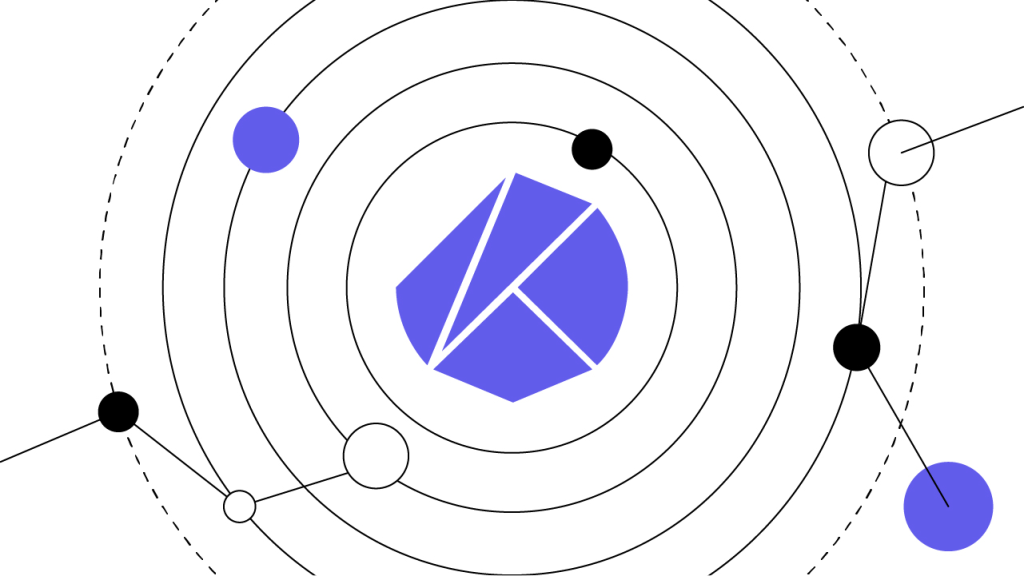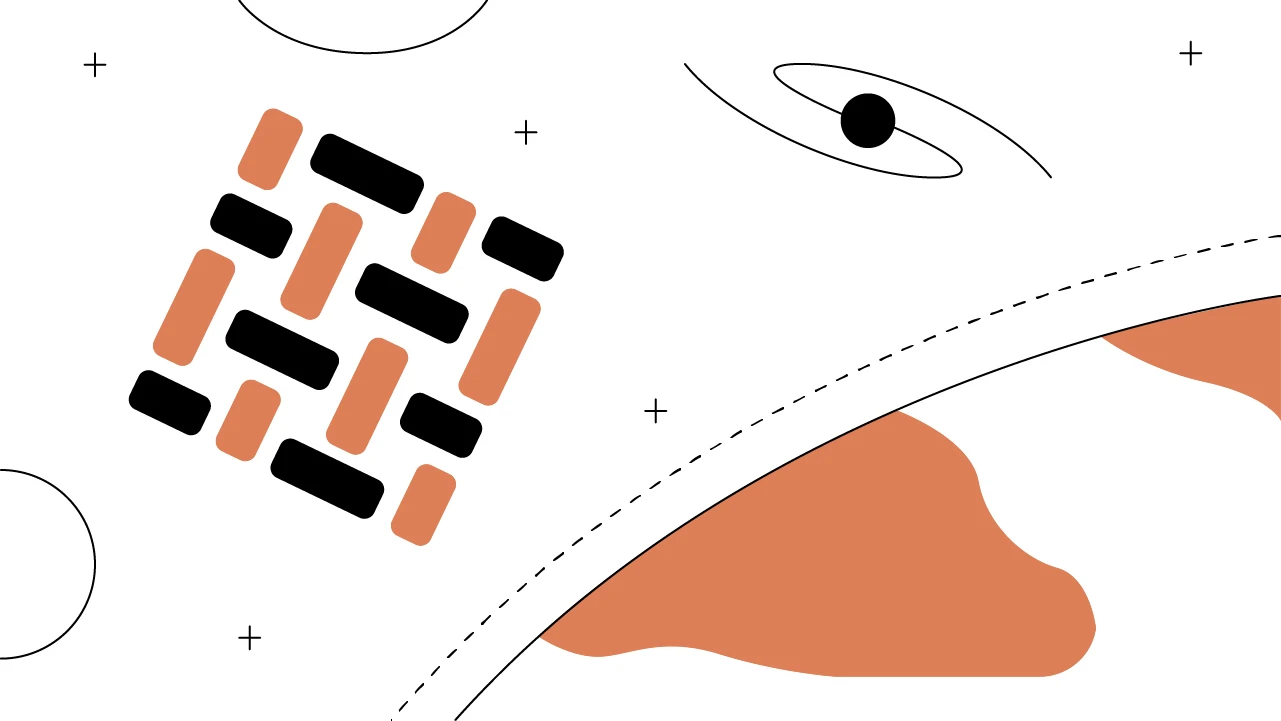Contents
Klaytn (KLAY): A New Model for Enterprise Blockchains
Klaytn (클레이튼) is a blockchain services provider that strikes a balance between decentralization and functionality for enterprises.
Updated November 24, 2021 • 3 min read

Summary
South Korean blockchain services provider Klaytn (클레이튼) offers a new model for enterprises looking to capture value with blockchain technology. Klaytn’s network of networks connects bespoke enterprise blockchains to a central Klaytn blockchain network, providing the flexibility, scalability, and oversight required by enterprise clients. All constituent networks link back to the core Klaytn blockchain, a unique structural design intended to ensure long-term functionality, security, and the network effects of an enterprise-focused blockchain network.
Klaytn’s Modular Network Structure
Developed by South Korean internet provider Kakao, Klaytn is a public enterprise blockchain platform designed to function as a network of networks. Klaytn’s blockchain network is composed of multiple constituent peer-to-peer (P2P) subnetworks made up of Klaytn nodes, which process transactions and block data in order to execute value transfers and smart contract agreements.
The entire Klaytn network can be conceptualized as a central Klaytn blockchain network that connects a multitude of adjacent blockchains, each fine-tuned for the specific needs of an enterprise client, that feed back into the central Klaytn hub. This model is intended to offer the benefits of decentralized networks and blockchain technology to enterprises, while maintaining enough control to fit the needs of large business operations. While you will get a deep dive on Klaytn’s architecture here, you can also check out how it’s applied in Klaytn’s Rapidly Expanding Service Ecosystem.
In general, the Klaytn blockchain network can be divided into three different subnetworks:
Core Cell Network (CCN) — The CCN consists of a grouping of nodes called Core Cells (CCs) that work together to verify and execute transactions through the platform’s Endpoint Nodes. Each CC is made up of a Consensus Node (CN) and two Proxy Nodes (PNs). The CCN model is what makes the creation and propagation of blocks throughout the Klaytn network possible.
Consensus Node Network (CNN) —The CNN is a full-mesh network of Consensus Nodes (CNs) that executes Byzantine Fault Tolerance (BFT) consensus over a wide area network (WAN). At its core, a WAN is a telecommunications network that amalgamates smaller networks which can communicate with each other. This CNN subnetwork requires each constituent CN to satisfy a variety of stringent hardware and network resource requirements in order to effectively execute the Klaytn network’s consensus algorithm.
Proxy Node Network (PNN) — PNNs are a network of connected PNs that typically maintain only one connection with a peer PN that does not live within the same CC. However, this connection configuration can change depending on the network’s evolution over time.
Endpoint Node Network (ENN) — The ENN consists of Endpoint Nodes (ENs) and constitutes the outermost subnetwork of the main Klaytn blockchain’s architecture. This subnetwork is dedicated to creating transactions, handling Remote Procedure Call API requests, and processing data requests to and from Klaytn’s Service Chains.
Service Chain Network (SCN) — This is where enterprise user chains come into play. The SCN is composed of auxiliary blockchains, which are independently operated by enterprise users to achieve various service-specific goals. As a result, they are highly customizable and can be structured to connect to Klaytn’s mainchain for a variety of purposes, including data anchoring and interchain value transfers. In terms of network architecture, Service Chains are connected via the ENN to handle data requests and are capable of supporting token transfers across different blockchains. This feature makes it easier for Klaytn’s enterprise clients to migrate their users and assets across different chains.
Service Chains were incorporated into Klaytn’s design to strike a balance between network decentralization and more effective usability. As a result, Service Chains are not obligated to be decentralized, since Klaytn’s founders believe that requiring all enterprise users to adopt a fully decentralized blockchain would stifle the project’s growth and functionality. Many enterprise users use Service Chains to host blockchain applications, or “BApps,” that may require tailored node configurations and security protocols. Within Klaytn’s ecosystem the term BApp is used instead of the common term dApp, or “decentralized application.”
Klaytn also operates multiple Bootnodes, which are a special type of node designed to help new user nodes register to each subnetwork, and to discover connectable nodes. Bootnodes that reside within the CNN are not publicly visible, while PN and EN Bootnodes are. PN Bootnodes only permit vetted PNs for registry, and enable eligible PNs to connect with ENs. Conversely, EN Bootnodes provide ENs with information about which PNs to connect to.
Klaytn’s Blockchain Governance Process: Block Generation and Propagation
As a service-centric blockchain built to achieve enterprise-ready performance, Klaytn is built to minimize network latency. As a result, Klaytn’s block generation and propagation processes play a central role in improving the network’s overall usability. Below are the key steps involved in generating and propagating new blocks on the Klaytn network:
Block Generation — Klaytn’s block generation cycle is called a “round,” and each round is immediately following the start of a new round. Each round lasts approximately one second, although the block generation interval may be affected by network traffic and node conditions. In each round, a CN is randomly but deterministically selected to be the proposer for the block that will be created. That means that the probability of a CN being enlisted as the proposer is determined by the amount of Klaytn tokens, or KLAY, that the CN stakes. This in turn means that a CN with more KLAY staked in the platform is statistically more likely to receive a larger share of the rewards over time.
At the same time, a group of CNs is selected to serve as the committee which will approve or reject the new block in the given round. For this to happen, each CN on the committee utilizes a random number derived from the most recent block header to run a cryptographic operation that yields proof of whether the CN in question has in fact been selected as the proposer for the round. The committee size is Byzantine-resistant, meaning that if the size of the CNN is too small, then all the CNs aside from the proposer become eligible for selection as committee members. As a result, Klaytn does not directly select the proposer nor the committee, allowing the block generation process to achieve a significant level of decentralization.
Block Proposal and Propagation — Once selected, the proposer broadcasts its cryptographic proof of selection for the round. Every proposed block must then be signed off on by more than two-thirds of committee members in order to be successfully finalized. Once the committee comes to a consensus, the new block is propagated to all CNs and the consensus round is complete. Additionally, since Klaytn assigns distinct propagation channels for transactions and blocks, the network is able to rapidly propagate newly created blocks even when the network is processing a high volume of transactions. As a result, Klaytn ensures that the BApps on its network remain responsive to end-user requests even when network traffic spikes unexpectedly.
Block rewards — For each round, a block reward will be distributed to various network contributors according to pre-set distribution ratios. 100% of the rewards allocated to CNs are given to the proposer of the newly created block.
Klaytn Smart Contracts
Klaytn accommodates several methods for writing and executing smart contracts, which can be programmed to implement a wide array of business processes or direct any type of automated process. In order to encourage ecosystem development, Klaytn caters to developers familiar with Ethereum by supporting the Solidity programming language. This should maintain interoperability with Ethereum developmental toolkits like Remix and Truffle. Going forward, Klaytn intends to accommodate smart contracts with more programming languages in order to attract a broader range of potential developers.
Furthermore, the Klaytn blockchain’s transaction fee model focuses on affordable smart contract execution. While Ethereum’s opcode-based fee model often results in fluctuating transaction costs, Klaytn uses a fixed unit price which can be adjusted by the Klaytn Governance Council, a group of pre-vetted strategic enterprise partners. This mechanism ensures that every transaction on the Klaytn network is processed more equitably and successfully executed.
By focusing on both enterprise blockchain adoption and consumer-level users, Klaytn has created a flexible, feature-heavy platform primed for mass adoption. And while Klaytn is a relatively new project, it has managed to attract global business leaders as strategic partners and ecosystem participants spanning a broad range of industry verticals — an early, but promising indication that many see value in its unique service-centric approach.
Cryptopedia does not guarantee the reliability of the Site content and shall not be held liable for any errors, omissions, or inaccuracies. The opinions and views expressed in any Cryptopedia article are solely those of the author(s) and do not reflect the opinions of Gemini or its management. The information provided on the Site is for informational purposes only, and it does not constitute an endorsement of any of the products and services discussed or investment, financial, or trading advice. A qualified professional should be consulted prior to making financial decisions. Please visit our Cryptopedia Site Policy to learn more.

Is this article helpful?


